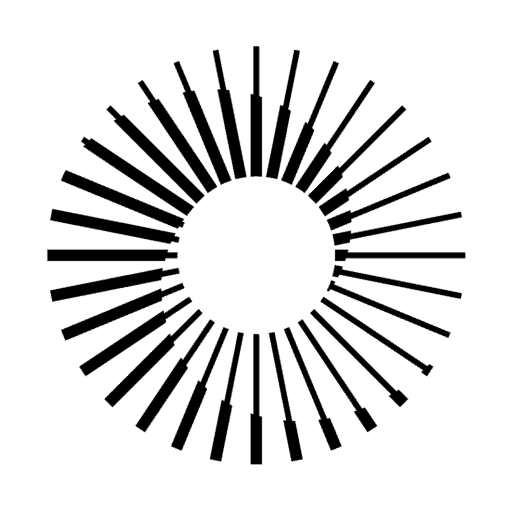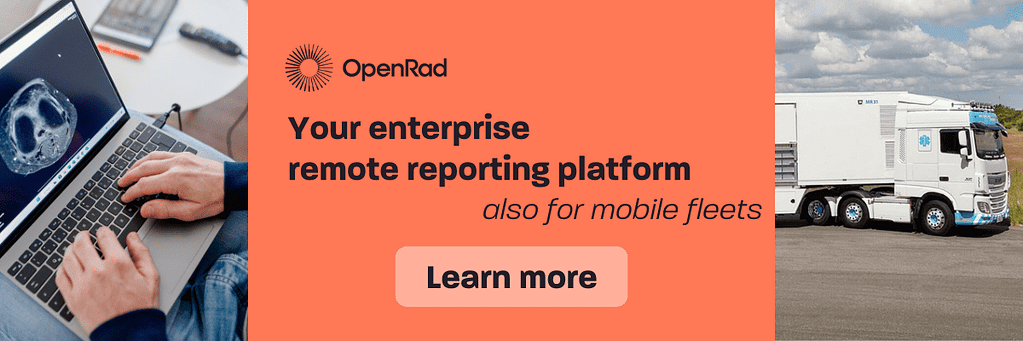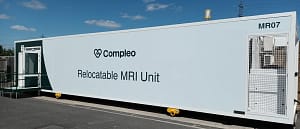Magnetic resonance imaging (MRI) is an important diagnostic tool because it produces high-quality diagnostic images, without the use of ionising radiation.
It has both advantages and disadvantages, just like any other imaging technology. More often than not, the benefits of MRI outweigh the possible risks the examination can bring. Thus, it is frequently used.
What happens during MRI?
- During magnetic resonance imaging, the scanner creates a strong magnetic field around the patient’s body—with the help of a powerful magnet. Atoms inside the body’s tissues align themselves in a certain way as a result of the action.
- After that, the machine sends radio waves through the body that cause the atoms to produce signals. A receiver picks up on those signals and sends them to a computer. One MRI session can produce thousands of images.
- There are some situations in which the use of contrast substance is recommended, so the obtained images are more detailed. Contrast agent is a harmless substance, and it is injected into the vein of the patient before the examination starts.
Depending on the area that is being examined, there are numerous types of magnetic resonance imaging out there. Some of the most common examinations include:
- Abdominal MRI
- Cervical MRI
- Chest MRI
- Cranial MRI
- Heart MRI
MRI is used to diagnose a variety of conditions, including aneurysms, multiple sclerosis, stroke, spinal cord disorders, tumors, blood vessel issues and joint or tendon injuries.
How long does MRI take?
It is difficult to determine the exact duration of a magnetic resonance imaging session because each patient’s situation is different, and there are many factors that can influence the examination. Usually, a basic MRI can take anywhere between fifteen minutes and more than an hour.
If the patient doesn’t cooperate during the examination, the process becomes even more difficult for both parties involved. Even small movements can ruin the quality of the final images, which makes it impossible for healthcare providers to determine the exact cause of the symptoms the patient is experiencing. That is why the examination must be repeated.
Who performs MRI?
Magnetic resonance imaging scans are performed by radiologic technologists who are specially trained to operate the MRI scanner. Of course, they aren’t the only ones who are involved in the process. After obtaining the required images, technologists consult with other healthcare professionals, so they can ensure that the treatment plan they come up with fits the patient’s needs.
Advantages of MRI
- No ionising radiation: The biggest advantage of magnetic resonance imaging is probably that it doesn’t use ionising radiation, which allows for a safe examination of any area of the body. Ionising radiation is harmful in large doses, and that’s why people who undergo CT scans must keep track of the amount of radiation they were exposed to. This problem doesn’t exist for the patients who choose to do MRI scans. These examinations can also be repeated as many times as it’s necessary.
- High-Resolution: Compared to other imaging techniques, MRI can produce images of a higher quality. Details that are difficult to see during a CT scan can be easily detected during MRI, which is why many specialists recommend this imaging technique in particular.
- Versatility: Magnetic resonance imaging can be used to examine any area of the body, which allows specialists to provide diagnosis and treat medical conditions in an efficient way. The examination can be tailored to fit the needs of any patient, based on factors such as age or weight.
- Early Detection: There are some medical conditions that occur suddenly through powerful symptoms, which gives people the warning they need to visit a hospital. However, that’s not the case for all afflictions. Sometimes, the symptoms are barely noticeable. This makes it difficult for patients to seek medical help because they aren’t yet aware of the problem they are dealing with. MRI allows patients to receive medical help in a timely manner.
Disadvantages of magnetic resonance imaging
- Costs: It is not surprising that MRI scans are more expensive than other alternatives, such as computerised tomography or X-Rays. That is mainly because the equipment required to perform MRI scans is expensive to manufacture and maintain. Another explanation can be that the radiologic technologists who operate the MRI scanners require specialised training. Thankfully, many examinations are covered by health insurance.
- Time: As it has been mentioned earlier, performing a MRI scan can take more than an hour, depending on the circumstances. Sitting still for such a long period of time can be quite difficult, especially when the patient is a child. If a person moves during the magnetic resonance imaging procedure, the images become blurry, which makes it impossible to determine the correct diagnosis.
- Enclosed space: Those who suffer from claustrophobia will find it uncomfortable and sometimes impossible to sit in an enclosed space for a long period of time. A solution to this problem is performing the examination with an open MRI, although not all hospitals possess such a scanner.
- Noise: The MRI scanner can be quite loud, because of the repetitive noises it produces. This can also make patients feel uncomfortable during the procedure. However, this issue is easier to fix than the previous one, as it only requires a pair of quality earbuds, which are provided by the clinic.
Are there any MRI contradictions?
Although MRI is safer than other imaging technologies, there are some contradictions that radiologists must bring to the patients’ attention.
The most obvious ones are claustrophobia (because of the discomfort the affected person is experiencing during the magnetic resonance imaging), metal implants or devices and pregnancy.
The contrast agent that is sometimes used in MRI examinations can also be harmful to people dealing with kidney problems. The condition it can lead to is known as nephrogenic systemic fibrosis, but it is worth to mention that the chance of it actually occurring is rare.
Finally, MRI is one of the most useful diagnostic tools because of its versatility and the high-quality images it manages to produce. As technology evolves, like in the field of radiology, these and other imaging techniques will continue to improve.





